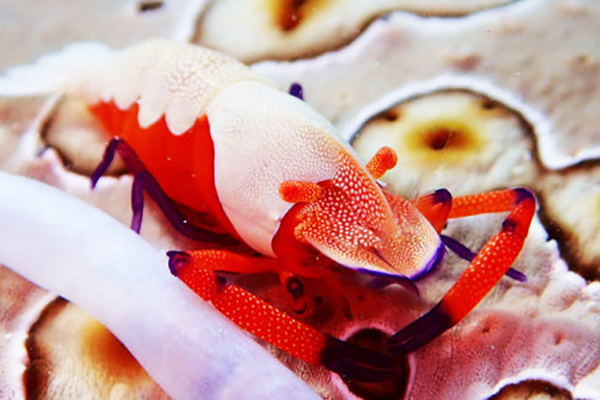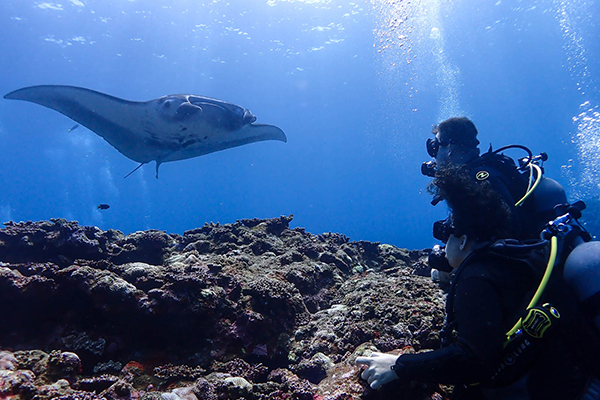
No.1 Manta Ray
There are several manta ray points on Ishigaki and surrounding islands, including Manta Scramble, Manta City, Yonara Channel, Kuroshima Island, and Panari Manta Point.
Mantas can be seen all year round. Of course, we cannot be 100% sure because we are dealing with nature, but if the timing is right, we may be able to observe several manta rays dancing wildly at the same point almost every day.
No.2 Giant Cuttlefish
During the season, you will often see males fight each other over one female. When spawning, the female inserts her beak-like legs into the coral and lays eggs that look like ping-pong balls. They are not afraid of divers at this time of the year, so it is possible to observe them up close.
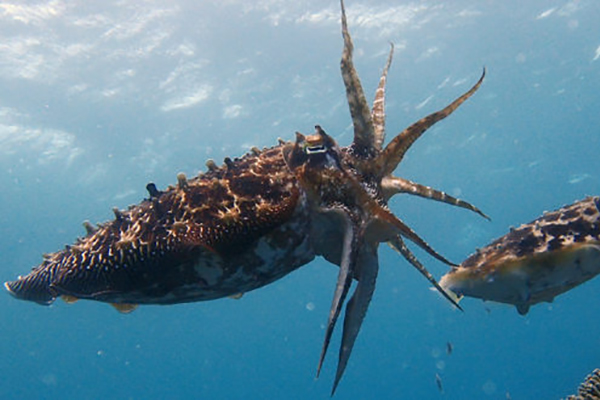
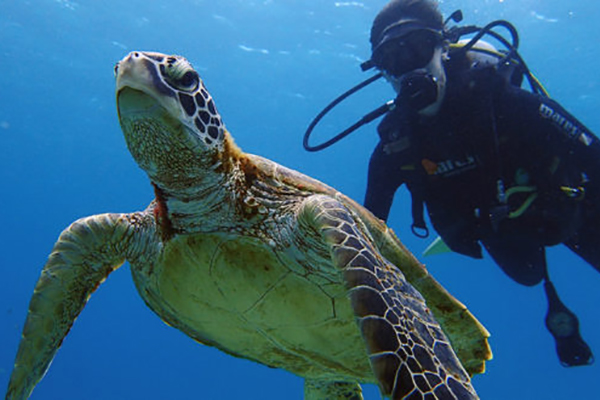
No.3 Sea turtle
They occasionally come to the surface to breathe, but when they are mostly under the water, napping on the rocks. They are easy to take pictures with as they are rarely bothered by divers. However, as with other species, touching turtles is strictly forbidden.
No.4 Ribbon eel
The ribbon eel is initially born as a male and then undergoes a sex change. As a juvenile, it has a black body with yellow dorsal fins, snout, and chin tip, and as it grows, its body changes to a bright blue color. Later, they change sex and become females, and their body color turns yellow.
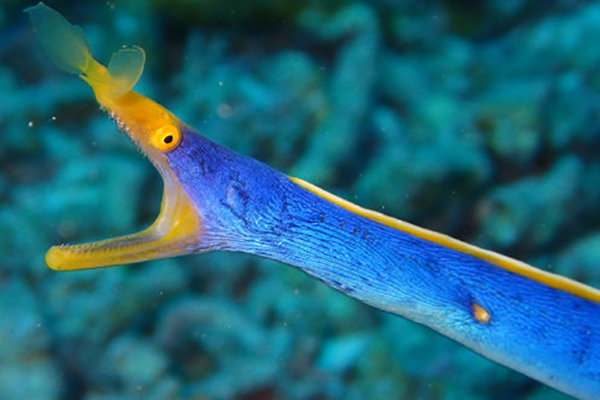
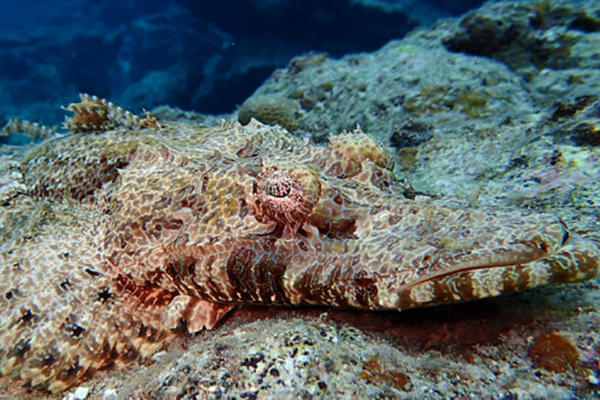
No.5 Crocodilefish
Although this fish is well camouflaged and looks unassuming at first glance, a closer look reveals a beautiful iris membrane with many branches covering its eyes. They are also popular subjects for underwater photography, as they hardly move even when divers approach them.
No.6 Longfin batfish
Longfin batfish has a pointed mouth, while Tiera batfish has a yellow belly and no pointed mouth. Some schools seen in Nagura Bay have a mixture of both.
Sometimes, you will find cleaner wrasse cleaning the body of Longfin batfish. While getting cleaned, the body color of the batfish turns very dark.
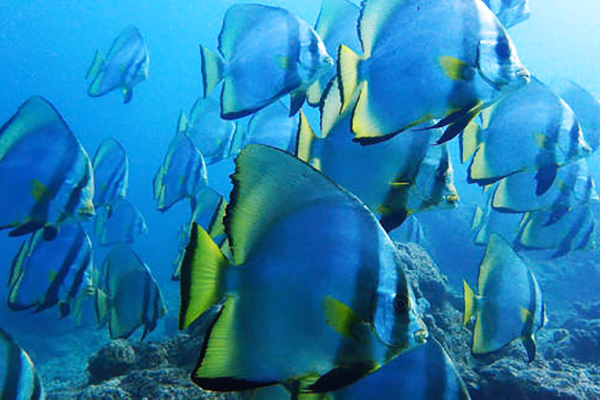
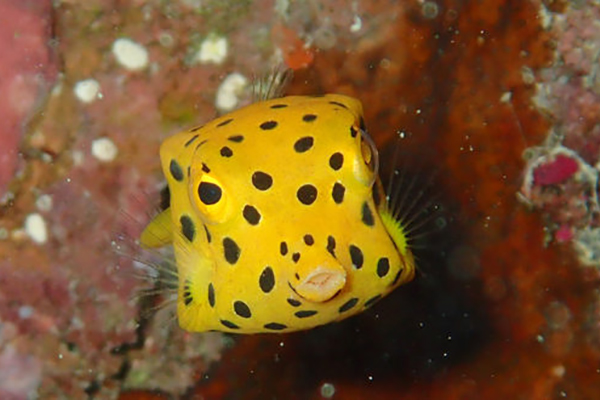
No.7 Yellow boxfish
They live alone in shallow rocky areas and are relatively easy to spot due to their bright body color. Some of the small ones are less than 1 cm in length, and they move about, hiding in crevices in the rocks to protect themselves from foreign enemies.
Although they are adorable fish, they are also known to emit toxic mucus from the surface of their skin when attacked by foreign enemies.
No.8 Sharks
The main species seen on Ishigaki Island is the whitetip reef shark, while guitar sharks are seen from time to time.
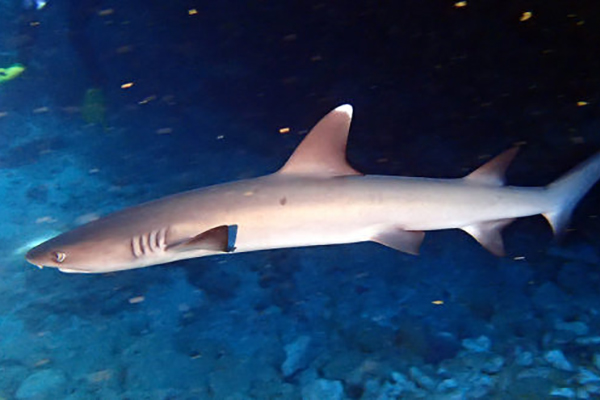
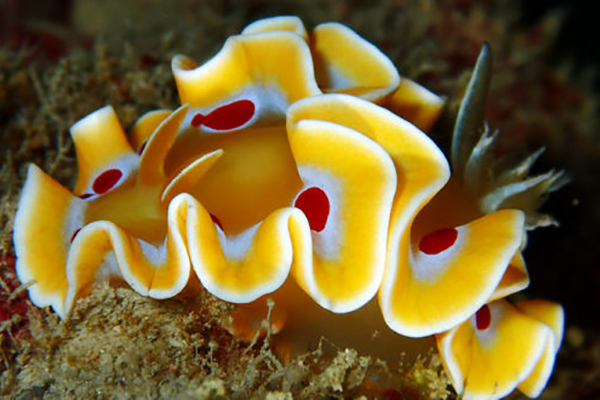
No.9 Nudibranch
Some of the larger ones are 5-10 cm in length, but most are as small as 1-2 cm, making them difficult to find. However, if you look closely, you will see that many of them are brightly colored and shaped, and since they rarely move, they are great subjects for underwater photographs.
They can be seen all year round, but are more numerous in winter when the water temperature is cooler.
No.10 Shrimp
Some are large, such as the lobsters, which can grow up to 30 cm in length, but most are small, 2-3 cm long, and can be difficult to find.
The emperor shrimp in the photo is a parasite of sea cucumbers and nudibranchs, and it is very difficult to take a picture of it because it runs away so hard.
